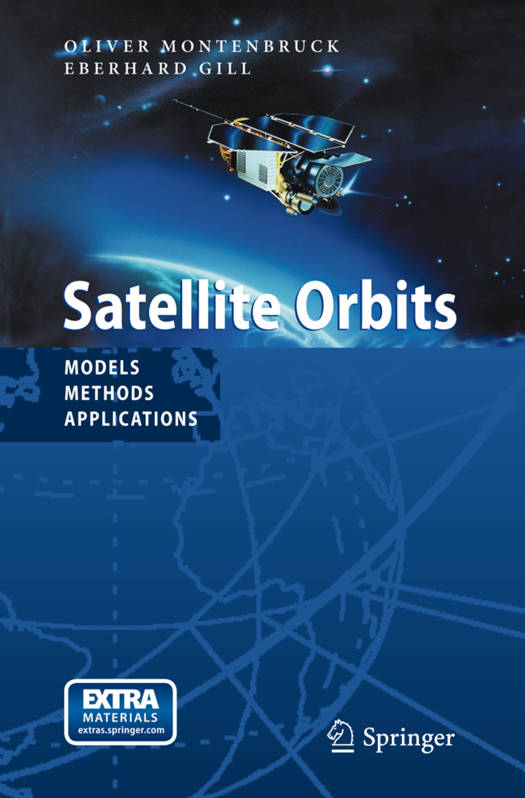
- Afhalen na 1 uur in een winkel met voorraad
- Gratis thuislevering in België vanaf € 30
- Ruim aanbod met 7 miljoen producten
- Afhalen na 1 uur in een winkel met voorraad
- Gratis thuislevering in België vanaf € 30
- Ruim aanbod met 7 miljoen producten
Zoeken
€ 89,95
+ 179 punten
Uitvoering
Omschrijving
Satellite Orbits -Models, Methods, and Applications has been written as a compre- hensive textbook that guides the reader through the theory and practice of satellite orbit prediction and determination. Starting from the basic principles of orbital mechanics, it covers elaborate force models as weH as precise methods of satellite tracking and their mathematical treatment. A multitude of numerical algorithms used in present-day satellite trajectory computation is described in detail, with proper focus on numerical integration and parameter estimation. The wide range of levels provided renders the book suitable for an advanced undergraduate or gradu- ate course on spaceflight mechanics, up to a professional reference in navigation, geodesy and space science. Furthermore, we hope that it is considered useful by the increasing number of satellite engineers and operators trying to obtain a deeper understanding of flight dynamics. The idea for this book emerged when we realized that documentation on the methods, models and tools of orbit determination was either spread over numerous technical and scientific publications, or hidden in software descriptions that are not, in general, accessible to a wider community. Having worked for many years in the field of spaceflight dynamics and satellite operations, we tried to keep in c10se touch with questions and problems that arise during daily work, and to stress the practical aspects of orbit determination. Nevertheless, our interest in the underlying physics motivated us to present topics from first principles, and make the book much more than just a cookbook on spacecraft trajectory computation.
Specificaties
Betrokkenen
- Auteur(s):
- Uitgeverij:
Inhoud
- Aantal bladzijden:
- 371
- Taal:
- Engels
Eigenschappen
- Productcode (EAN):
- 9783540672807
- Verschijningsdatum:
- 15/06/2000
- Uitvoering:
- Boek
- Afmetingen:
- 160 mm x 234 mm
- Gewicht:
- 680 g

Alleen bij Standaard Boekhandel
+ 179 punten op je klantenkaart van Standaard Boekhandel
Beoordelingen
We publiceren alleen reviews die voldoen aan de voorwaarden voor reviews. Bekijk onze voorwaarden voor reviews.











